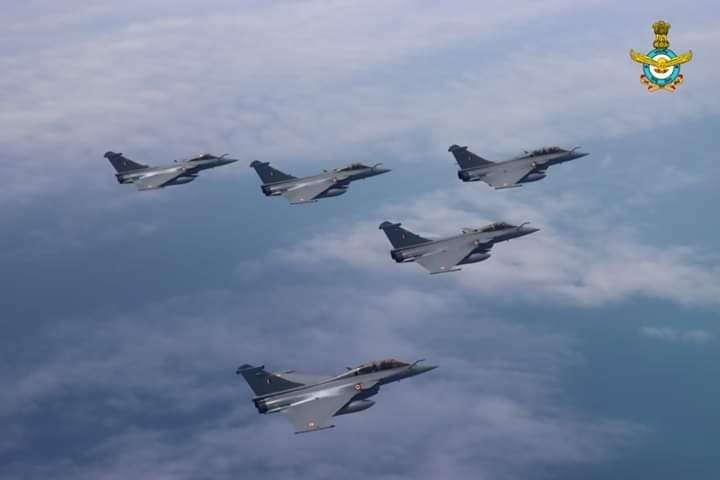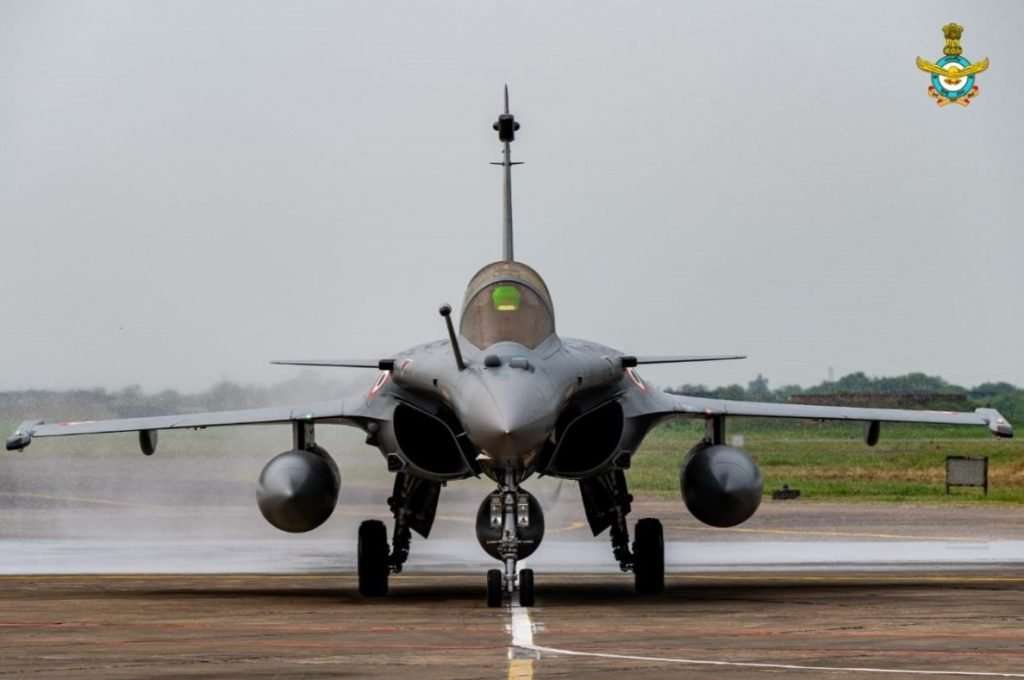As India welcomes the first batch of the French-made Rafale fighter jets with pride, we tell you more about these planes!
Much heat has been around the Rafales ever since the €7.87 billion deal was signed in September 2016. We have seen much drama ensue the fighter jet’s name in the months that passed by. After a wait of over 46 months, now the maiden squadron of 5 Rafale fighters has reached India. On July 29, 2020, these jets landed at the Ambala airbase in Haryana, ending an epic 7,000 km flight. The jets were accompanied by two Russian-made Sukhoi SU-30s in the Indian airspace and had gotten their welcome from INS Kolkata deployed in the Indian ocean. It was in the afternoon that the planes made their epic landing at Ambala.
India had ordered 36 units of this French combat masterpiece back in 2016. The deliveries of 10 jets have so far been completed, five of which have now reached Ambala’s Squadron no. 17, aka Golden Arrows, and the rest, remain in France for the training sessions. It is known that the next squadron will go to Hasimara in West Bengal. Enough with the GK lessons, let’s now dive straight into the subject!

More About The Rafale…
The Rafale or the Dassault Rafale to be more precise is a French-made multirole fighter jet. It is a twin-engine, canard delta wing bird manufactured by Dassault Aviation of France. The manufacturer has a decent legacy in civil aviation, defense aircraft manufacturing, and in making aerospace vehicles.
The first Rafale or the Rafale A demo, had had its maiden flight on July 4, 1986. However, the Rafale C is a later and technically more advanced addition to the lineup, which had had its first flight on 19 May 1991. At present, the jet comes in three different variants- Rafale C (single-seat, land-based), Rafale B (twin-seat, land-based), and Rafale M (single-seat, carrier-based). The first unit made for the Indian Air Force (IAF) was a twin-seat version (apparently a Rafale B) and was later christened RB-008 and will be the last aircraft to reach India. Currently, many leading global powers make use of Rafales in their airforce, due to their versatile nature and combat efficiency.

Think of Rafale as an all-rounder, someone who can intimidate, suppress, and conquer opponents with ease. Rafales can be put to use in performing air supremacy, interdiction, aerial reconnaissance, ground support, in-depth strike, anti-ship strike, and even nuclear deterrence! This is literally a hell that can fly! It is due to this versatility and high combat potential of the Rafale that its makers call it an ‘Omnirole jet’- something that can fit literally anywhere!
In the strict sense, the Rafale is an aerodynamically unstable aircraft that makes use of digital fly-by-wire flight controls to forge stability. However, it is known for its maneuverability, thanks to the delta wing and the active close-coupled canard! (The smaller forewing in front of the main wing) The aircraft has recorded low speeds of up to 28km/h during practice sessions. It is capable of operating from STOBAR-equipped aircraft carriers and ski jumps as well.
The Rafale has been so designed as to minimize radar cross-section and infrared signature so that the enemy radars do not detect it with ease. However, it cannot be called a thorough-bred stealth aircraft. The plane is powered by two Snecma M88 engines, each capable of providing 50 kilonewtons of dry thrust.
The armaments onboard the fighter include the Meteor missile, SCALP air-to-ground missile, MICA air-air missile, and HAMMER medium-range air-to-ground missiles. Besides these, IAF has customized the planes with what they call the ‘India Specific Enhancements’ (ISE) which include Israeli helmet-mounted displays, radar warning receivers, etc.
Image Source: IAF Twitter Handle
ALSO READ:
- 15 Most Expensive Cars To Buy In India Today: Lamborghini Aventador SVJ, Rolls Royce Phantom And More
- Here Are 15 Most Expensive Bikes You Could Buy In India In 2019!
- COVID Relief: How Are Manufacturers Doing Their Parts?


